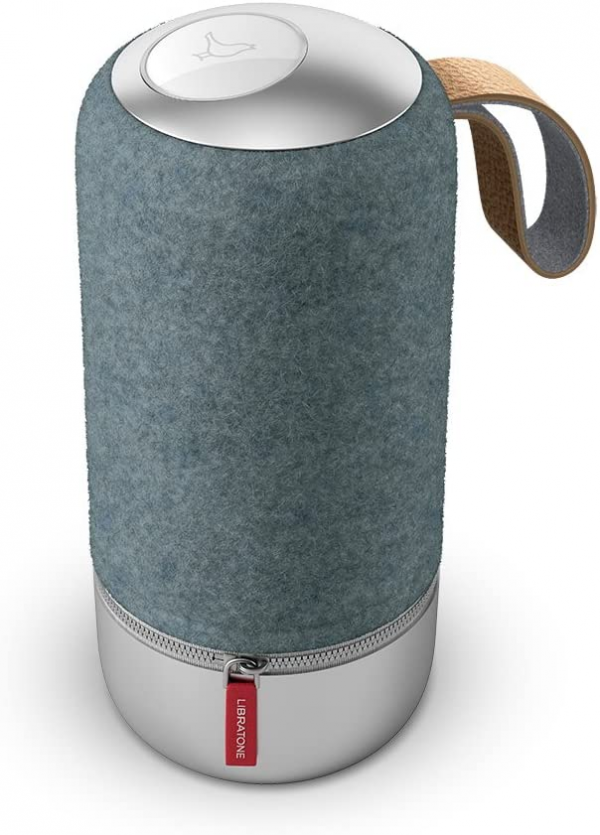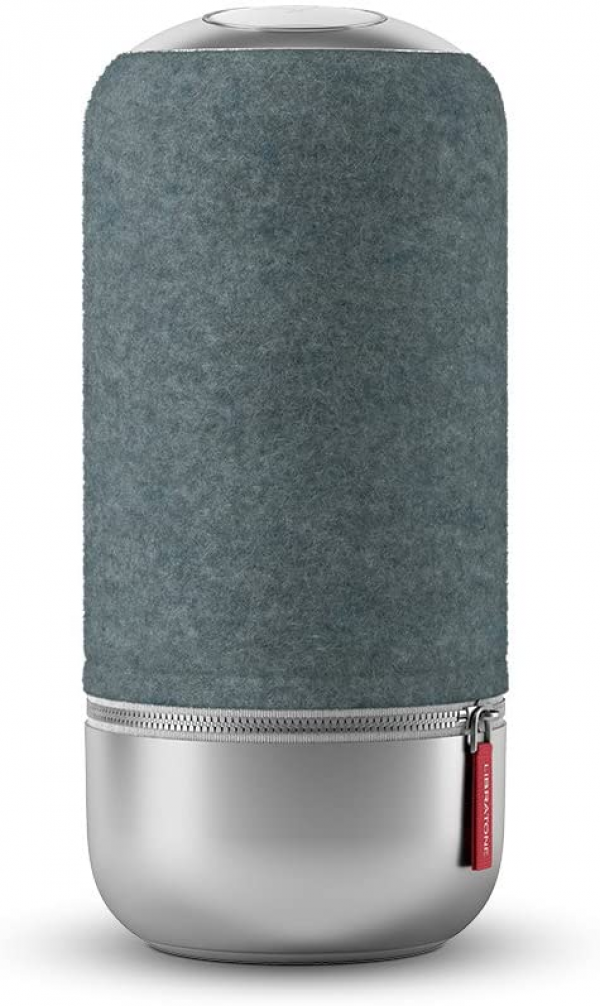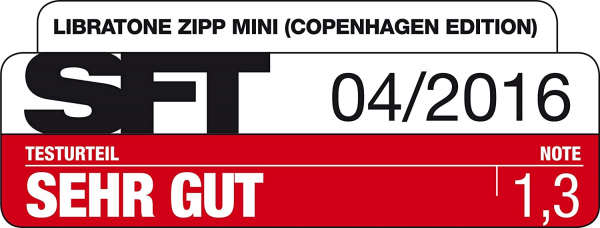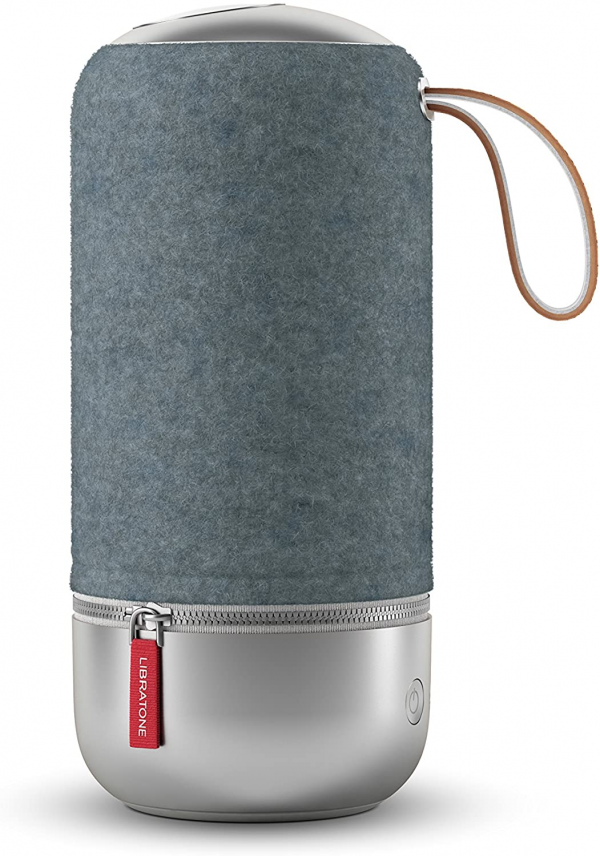Libratone
Libratone Zipp Mini: more compact and still as gifted
Aprox. 174€
See specificationsThe test of the new Libratone Zipp had escaped us in 2015. We recently corrected the situation, and fortunately, because the surprise was very good. "No time to fool around" as the young people say, we are investigating the Mini version which, we hope, has as many good surprises in store for us as its big sister!
Positive points
Sound fidelity and power for this size.
Many truly usable EQ presets.
Relatively homogeneous 360 ° diffusion.
Contained distortion.
Impeccable finish and construction.
Ultra-complete wireless functionalities (Wi-Fi, Bluetooth, multiroom, Spotify Connect, webradios).
Smartphone charging and reading via USB.
Complete controls, well integrated and easy to use.
Bad points
No NFC chip.
Application in English under iOS.
Reading the instructions is not a luxury.
Our review
Ergonomics
In the category of transportable speakers, the new Zipp by Libratone uses the same recipe as the first of its kind, namely a ...
If not its reduced size and its contained weight, the Zipp Mini (2015) does not change an iota compared to the normal version. Charging is always done via a proprietary power adapter with two tips, but no mini-jack cable is provided.
We therefore have a solid enclosure, extremely well finished, complete and which is also easy to use. There is Wi-Fi (DLNA, AirPlay), Bluetooth (aptX) as well as a 3.5 mm mini-jack input and a USB port for wired. Again, the speaker is compatible with Spotify Connect, multiroom and webradios.
As on the Zipp, it is possible to use the USB port as a playback source if you connect your smartphone. This avalanche of possibilities is very interesting and rarely seen on other speakers of this size.
The Zipp Mini offers just over 8 hours of autonomy at a comfortable listening volume (between 50 and 75% of the maximum volume) wirelessly. It is possible to glean an hour or two in wired use via the 3.5 mm mini-jack port. When a mobile device is charging on the USB port, allow approximately one to two hours less.

Multimedia
Wi-Fi (dual band 2.4 GHz and 5 GHz) is also part of the game and allows the Zipp Mini to be used in multiroom - also possible via Bluetooth. The speakers are connected to each other either via the touch screen interface or through the very practical application; it is enough to connect only one to the network so that all the others are also connected.
The application allows you to access different sound modes ranging from rock configuration to listening to film, through jazz or classical. Another parameter allows you to adjust the DSP depending on where the speaker is located (exterior, shelf, table, floor). It is also possible to rename the speaker, create different listening spaces or even configure the favorite webradios. The Zipp Mini is compatible with Spotify Connect and can read files with a sampling frequency and a maximum resolution of 96 kHz / 24 bits.

Audio
Like the Zipp (2015), the Zipp Mini plays 360-degree sound. For this, it relies on a 7.6 cm woofer, a 2.5 cm tweeter, two passive 8.8 cm radiators coupled with a 360-degree acoustic reflector. The whole thing is powered by a class D amplification which would deliver 60 W in total and which promises a frequency response between 50 and 20 kHz. Here is the response curve that we are measuring for our part:
Given its size, the Zipp Mini offers an excellent 360 ° sound experience. As you can see on the measurement, the reproduction is very homogeneous, whatever the position of the speaker. It is only by being perfectly in front of the tweeter that the treble is a little more present, but it remains quite anecdotal in the end.
In terms of sound rendering, the whole is rich, homogeneous, musical and can be even more balanced if you take the time to apply a small EQ adapted to the position of the speaker. Basic, the Zipp Mini tends to boost the bass and treble with a zest of midrange around 1 kHz. Present from 80 Hz, the bass provides a nice seat and depth, something rare for a speaker of this size. They are relatively large and diffuse, while remaining impactful and defined.
A little touch of EQ "Sol / Ground" allows to obtain a more neutral and fairer restitution. The mediums, rich and relatively precise, offer voices, guitars, saxophones and many other sources a nice preferential treatment. They remain clear and perfectly intelligible in all configurations. The treble brings the necessary clarity, but with a little too much shine. To soften them a bit, you can couple the EQ setting "Sol / Ground" with "Easy Listening" or turn the speaker a bit so as not to have the tweeter directly in front of you.
Very little to say regarding the distortion, since it remains very discreet up to around 82 dB; an already comfortable level of listening for most situations. It is expressed a little more in Bluetooth, but this remains very widely acceptable. In terms of power, the loudspeaker can even go up to 85 dB, enough to soundproof an evening, even outdoors.
Latency communication via Bluetooth is just right (less than 200 ms delay). If you want to watch videos, go via Wi-Fi or wired connection instead, the latency will be imperceptible.

Conclusion
Whether with its large or small format, Libratone does not laugh with its Zipp. This format does not have much to envy the larger model from which it is inspired: everything is there, and very well done, moreover. If you are looking for an ultra-versatile and powerful nomad speaker for the home, the garden and some quiet outings, look no further!
Specifications

